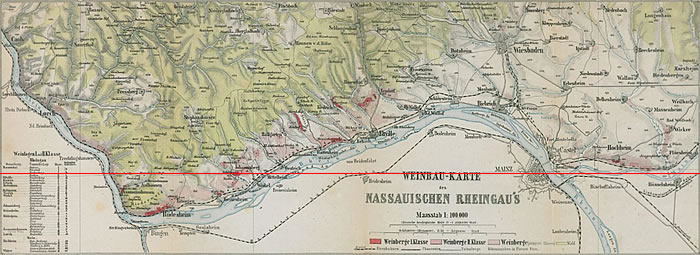The Rheingau region
Although the Rheingau region only has 3,000 hectares of vineyard acreage, it is one of the most important wine-growing regions in Germany, and also the world. The 50° latitude on which it lies also marks the most northerly point in which viticulture is possible. This is the home of Riesling, which was first documented in records of the region in 1435. Nearly 80 % of the Rheingau cultivates Riesling because the most ideal soil composition and climate conditions for this grape variety are found here.
The Rhine River contributes to the perfect climate
The climate in the Rheingau region is influenced by the Gulf Stream but also benefits from the Rhine River, which changes its direction from east to west at this point on its way from Lake Constance to the North Sea in order to swerve around the quartzite stones of the Taunus and Rhine hills. Thereby, the Rheingau vineyards have an ideal southerly orientation and an optimal degree of steepness in order to soak up as much sun as possilble. As the river flows through the Rheingau valley, the water heats up creating excellent thermal conditions, which along with the heat stored in the Taunus quartzite, cause the base temperature to rise, providing premium growing and ripening conditions for Riesling.

Quelle: Hochschul- und Landesbibliothek RheinMain, Landesbibliothek Wiesbaden












